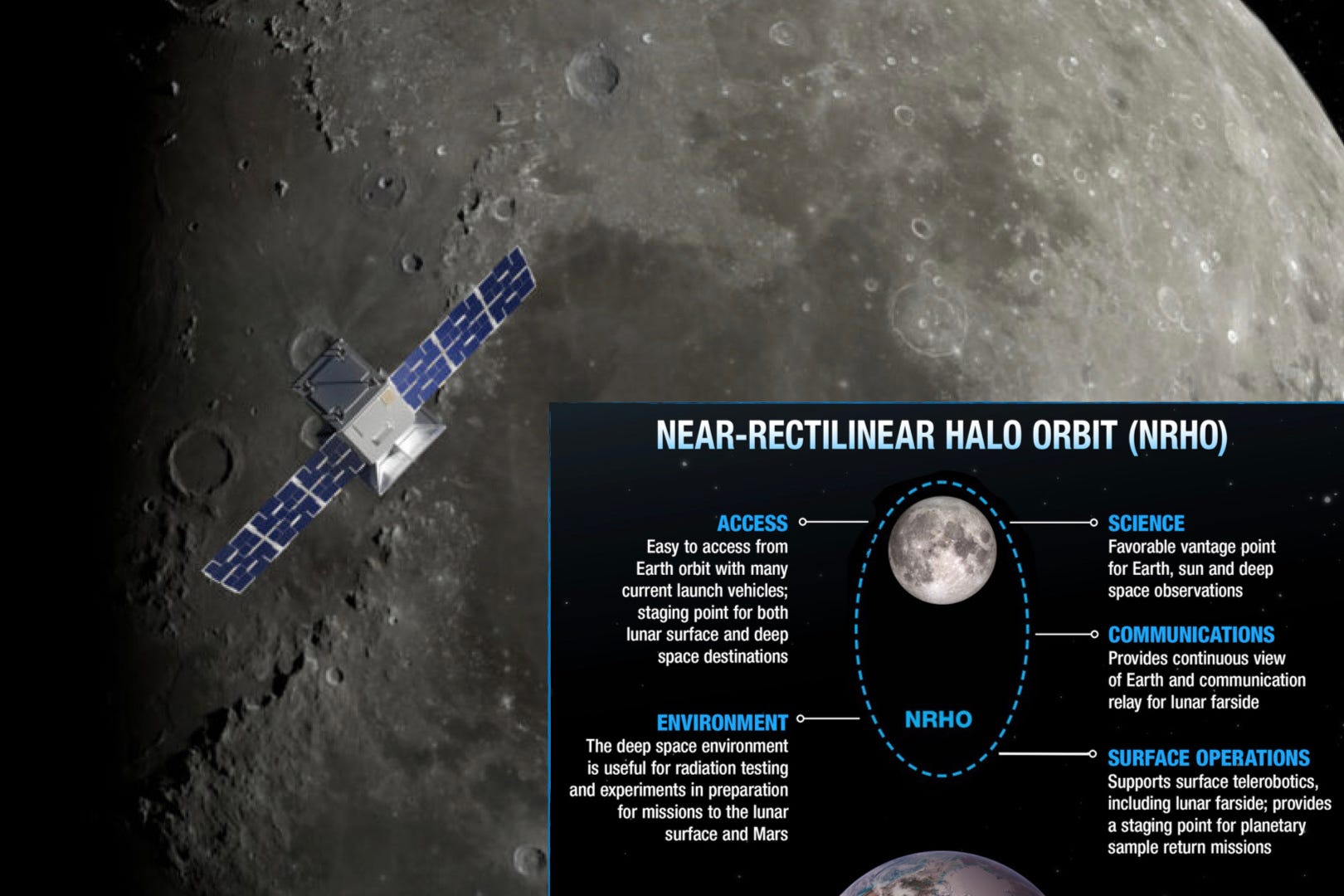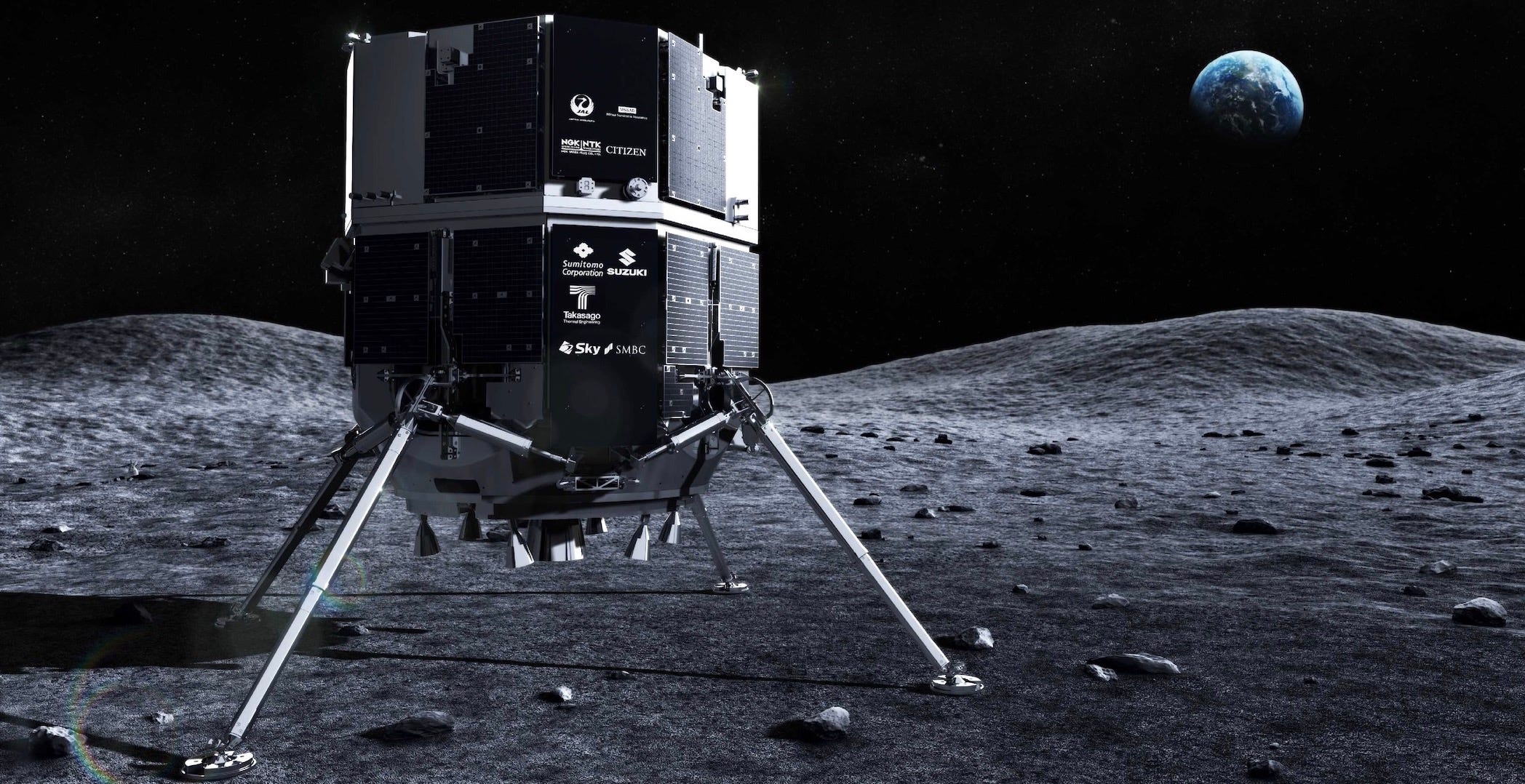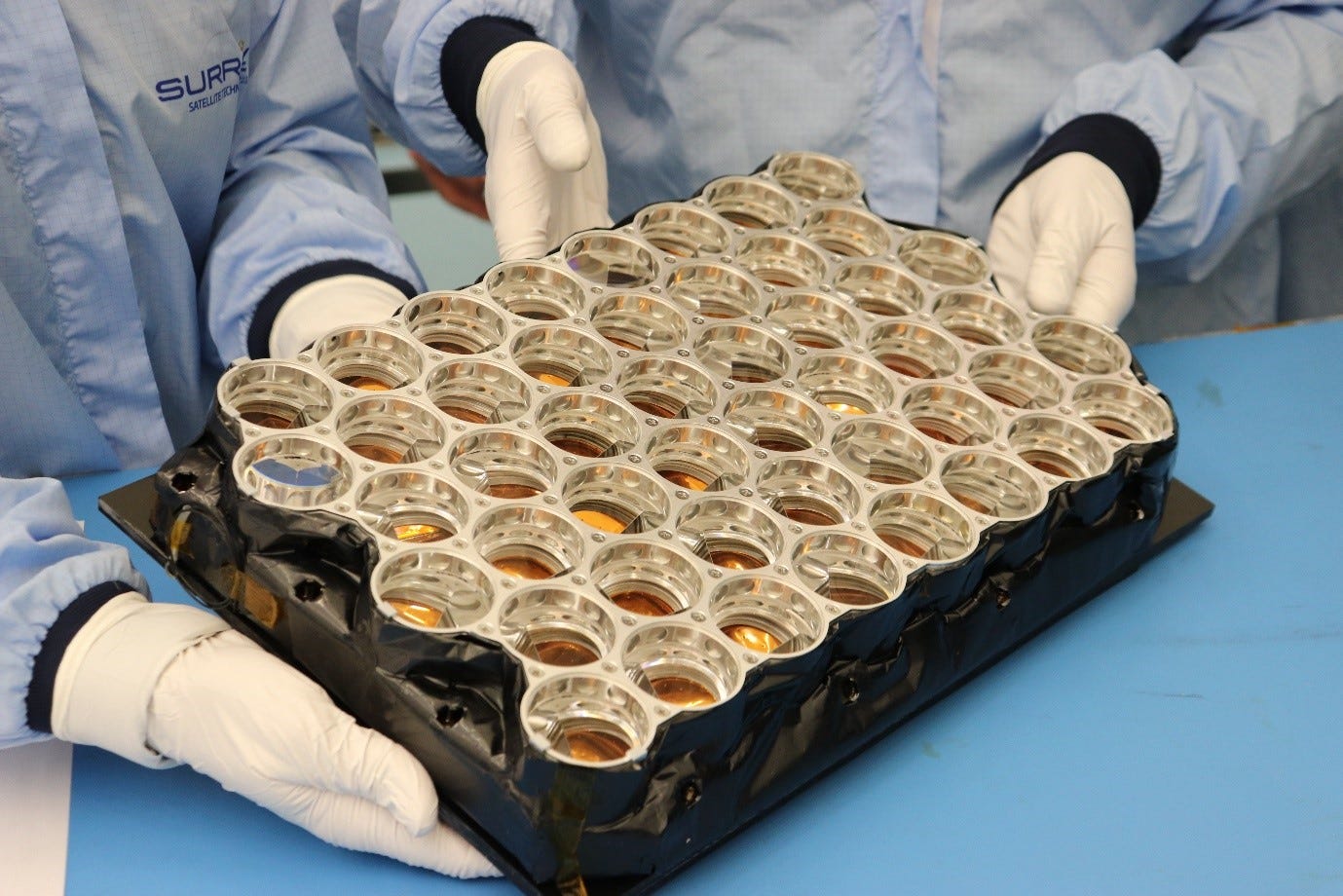Moon Monday #103: A CAPSTONE around the Moon, and updates on craft to follow soon
CAPSTONE enters lunar orbit
On November 13, the NASA-funded and Advanced Space-led CAPSTONE spacecraft successfully executed a 16-minute burn of 0.44 Newtons at the right time as it flew by the Moon and entered into its intended unique Near-Rectilinear Halo Orbit. This is the same orbit that the NASA-led international Gateway station for astronauts will be in later this decade. CAPSTONE will execute two small correction maneuvers this week to ensure being on the precise intended orbit. Over the next 6 months, CAPSTONE will help refine our mathematical models of this fuel-efficient orbit based on the exact propellant and power needed to maintain said orbit.

The CAPSTONE team deserves the fruits of this success, for they practically fully recovered a failing spacecraft and managed to have it enter the intended lunar orbit despite a faulty valve in one of the spacecraft’s eight thrusters. Relatedly, Advanced Space recently won a $72 million U.S. Air Force contract for a cislunar patrolling craft.
We now have five orbiters at the Moon:
- NASA’s Lunar Reconnaissance Orbiter
- China’s Queqiao relay satellite for Chang’e 4, halo orbiting Earth-Moon L2
- ISRO’s Chandrayaan 2 orbiter
- China’s Chang’e 5 service module, in a Distant Retrograde Orbit
- CAPSTONE :)
Next up, NASA’s Artemis I Orion spacecraft will orbit the Moon briefly sometime end of November or early December. South Korea’s KPLO will try breaking into lunar orbit on December 16 to then study our Moon for at least a year, and possibly more as ample fuel is expected to be available.
NASA’s SLS rocket faced yet another storm
NASA is targeting launch of its SLS rocket on November 16 during a two-hour window starting at 06:04 UTC for the much-awaited Artemis I mission to send an uncrewed Orion spacecraft around the Moon and back. There was much concern last week about hurricane Nicole damaging the fully stacked rocket on its launchpad—not just because rockets are typically designed to face more vertical winds than horizontal ones but also because of the prolonged time the hurricane-induced beating would continue with winds near or possibly above the rocket’s design limits.
NASA’s gamble to keep the rocket at the launchpad instead of rolling it back to its assembly building in an attempt to not delay launch for another month appears to have paid off. NASA says the winds missed crossing the rated limits of the rocket at respective heights, and estimates that there’s roughly 25% margin over those limits based on previous structural and modal testing. The post-hurricane inspection shows only minor damages to the rocket, much of which teams have resolved with the rest being worked on. If ongoing work and analysis related to a loose seal on Orion’s launch abort system delay liftoff, NASA could target launching SLS on November 19.
Many thanks to Epsilon3 for sponsoring this week’s Moon Monday.
The first ever lunar soil ownership transfer coming up
On November 4, the Japanese government approved a license for ispace Japan’s first Moon lander launching November end to collect lunar soil on its footpad and transfer its ownership to NASA.
NASA selected four companies in 2020 to collect lunar material (collect, not return to Earth) and transfer its ownership to the agency so as to set precedence for resource use under the U.S.-led Artemis Accords. ispace Japan and its subsidiary ispace Europe were two of the selectees; each will be awarded a total of $5000 post their tokenistic yet milestone demonstration. In September 2022, NASA already paid the interim milestone amount to ispace Europe, whose micro-rover on ispace Japan’s second Moon mission in 2024 will collect lunar soil to then transfer ownership to NASA.

Relatedly, with growing interest from space nations around the world to acquire and use lunar resources, and increasingly varied interpretations of what is and isn’t allowed by the 1967 Outer Space Treaty, the Open Lunar Foundation (a Moon Monday sponsor) led the creation of a lunar resources trust. As part of that, Orbit Fab will purchase a small amount of lunar soil from another company—presumably from one of the four NASA selectees—and transfer it to the trust to set precedence for sustainable lunar resource management for all.
NASA delivers tech demo payload to ESA for Lunar Pathfinder
NASA has delivered a retroreflector array to ESA for integrating into the UK-based SSTL’s Lunar Pathfinder spacecraft launching in 2025 on a NASA-funded CLPS lander. The retroreflector array is an advanced version of the one on NASA’s Lunar Reconnaissance Orbiter. Other than being used for laser ranging, the retroreflector array will be part of a technology demonstration.
The ESA-provided NaviMoon receiver onboard Pathfinder will be regularly oriented towards Earth to demonstrate a GPS fix at the Moon using terrestrial satellite signals millions of times fainter than those used by our phones. Positioning fixes from the receiver will be compared with conventional radio ranging methods as well as the retroreflector measurements to know how well it works. If successful, the demonstration could help validate ESA’s Moonlight navigation service, which seeks to reduce costs of future lunar missions. NASA itself will be testing a similar GPS fix from the Moon’s surface on Firefly’s 2024 CLPS mission.

More Moon
- Jeff Foust reports that NASA has decided to continue the Lunar Trailblazer orbiter mission despite costing $72 million, roughly 30% more than the $55 million mission cap of its SIMPLEx mission class. Launching in mid-2023 on a SpaceX Falcon 9 rocket, Lunar Trailblazer will give us unprecedented, high-resolution global maps of the amount, distribution, and state of water across the Moon. When considering that Trailblazer would provide this specific scientific data at a quality comparable to NASA’s Discovery-class missions that cost at least seven times more, this spacecraft critical to the lunar water story making it to the launchpad after all feels great.
- Andrew Jones reports that China has scrapped its idea of having an SLS-like expendable Long March 9 rocket for major future Moon missions in favor of a reusable design while still aiming for first launch around 2030. Note that China is making another relatively “smaller” rocket to begin crewed lunar missions before the Long March 9 is ready anyway.
- The Lunar Commerce and Economics Working Group of the Moon Village Association has released the first version of the “Lunar Commerce Portfolio” document, which they say realistically and transparently assesses the range of possible commercial outcomes for nine inter-related market offerings on and around the Moon. The breakdown of those offerings and their value chains mid-document is worth checking out.
- NASA said in July that it was preparing to award a contract for future SLS rocket launches to Deep Space Transport LLC, a joint venture between two major SLS contractors Boeing and Northrop Grumman. In hopes to reduce SLS’s cost of $2.2 billion per launch, NASA will transfer the ownership of its production and associated facilities into a single launch service contract. The baseline contract would be for Artemis V–IX missions, and likely extend to Artemis X–XIV later. In yet another great report, Jeff Foust details NASA’s formally provided justification for this sole-source award, and notes that the previously mentioned option for awarding Deep Space up to 10 non-Artemis SLS launches has been removed.
- From Chandrayaan to Artemis, highlighting collaboration in our return to the Moon; this was my International Moon Day talk for the Moon Village Association India earlier this year that’s now available online.
→ Browse the Blog | About | Donate ♡
